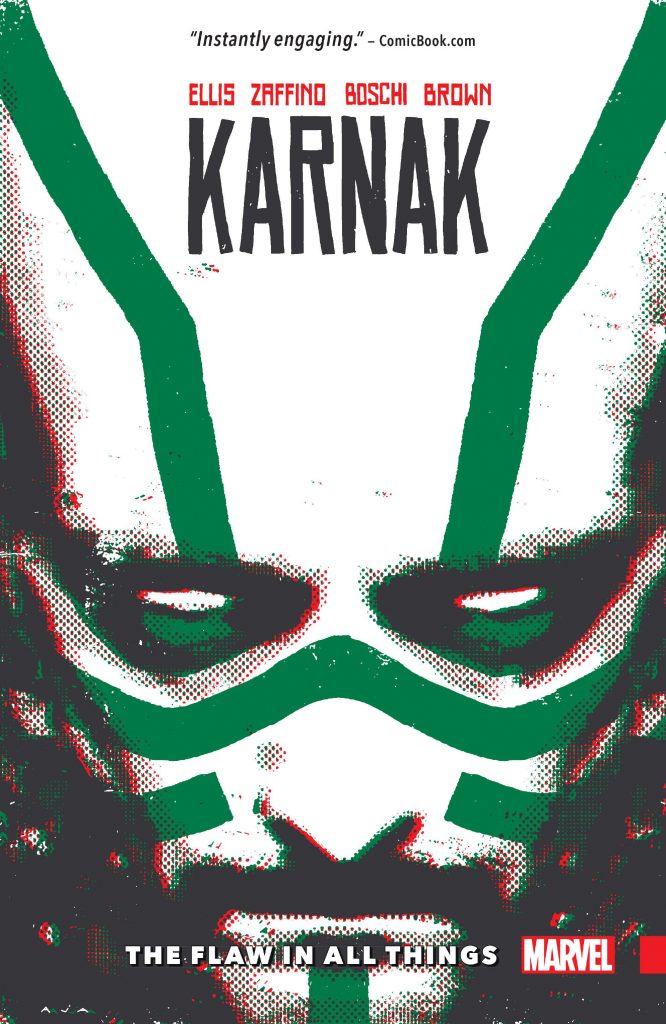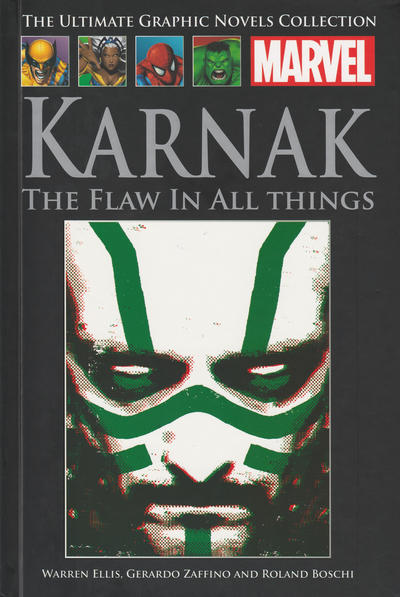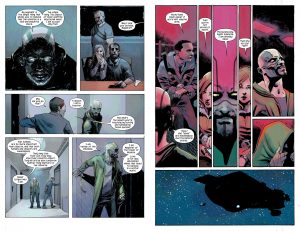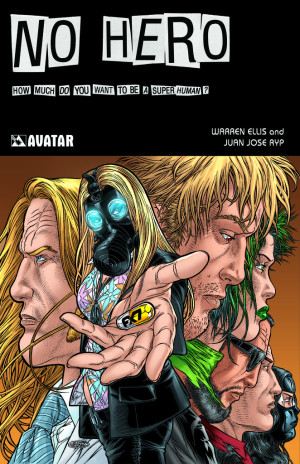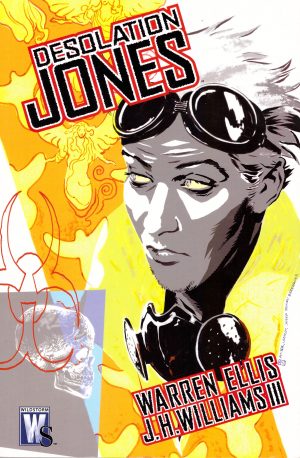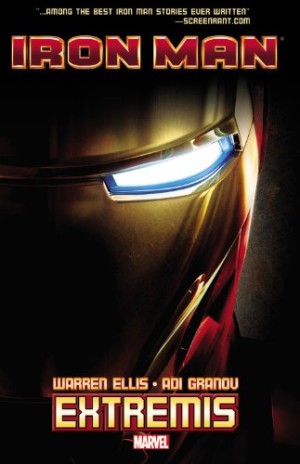Review by Ian Keogh
In recent years Karnak of the Inhumans has been reconfigured. He began life as an accomplished martial artist, progressed to the revelation of his super power being to detect the weak spot in any object or person, and then he died. On returning to life he withdrew from the other Inhumans and set up as a Magister, a form of teaching holy man, although his own attitudes and perceptions colour his teachings.
A very dry sense of humour is applied to Warren Ellis’ characterisation. At one point S.H.I.E.L.D. agent Coulson notes what a cheerless person Karnak is to talk to. He spouts abstruse statements, will discuss philosophical points with everyone, yet isn’t averse to comfort and near extortion, and reduces the states of life and death to electromagnetic activity. He accepts a mission to locate a young man whose allergies disappeared when the Inhumans’ transformative Terrigen Mists were loosed on the world, and who appears to have been abducted.
The storytelling is interesting. Ellis will have several pages at a time without captions or dialogue, letting the art guide the reader, which is very rare for any writer. It’s a technique made possible by the quality of the artists, first Gerardo Zaffino (sample art left), then Roland Boschi (sample art right) with Antonio Fuso also contributing a few pages. They all work in a loose, scratchy style, although Fuso and Boschi may just be following the tone set by Zaffino, and all have a distinctive eye for laying out a dynamic page. In Boschi’s case the action highlight is a sequence set in a church featuring some very strange adversaries, but he matches that with his serene interpretation of what a painter is. Colourist Dan Brown ensures a form of consistency, his tones matching the bleak outlook of the script.
Equally interesting is the philosophy. It’s clever, and toying with the audience. According to your preferences the well integrated discussions will either be something to ponder during the day’s idle moments or tedious interludes. Finding the flaws isn’t difficult in some instances, and Coulson supplies an interesting foil, but Ellis has considered this aspect, and the story circles around to consideration of what the flaw in Karnak might be. The finale reveals it in horrendous fashion.
There are going to be people who won’t like this in-depth dissection of Karnak’s personality. It re-evaluates what he is and what he’s prepared to do and the results aren’t pleasant. Karnak’s name is on the cover, he’s a hero of some long standing, yet is he really? Make your own mind up. If it helps, in the UK this is also available in hardback as part of the Ultimate Graphic Novel Collection.
